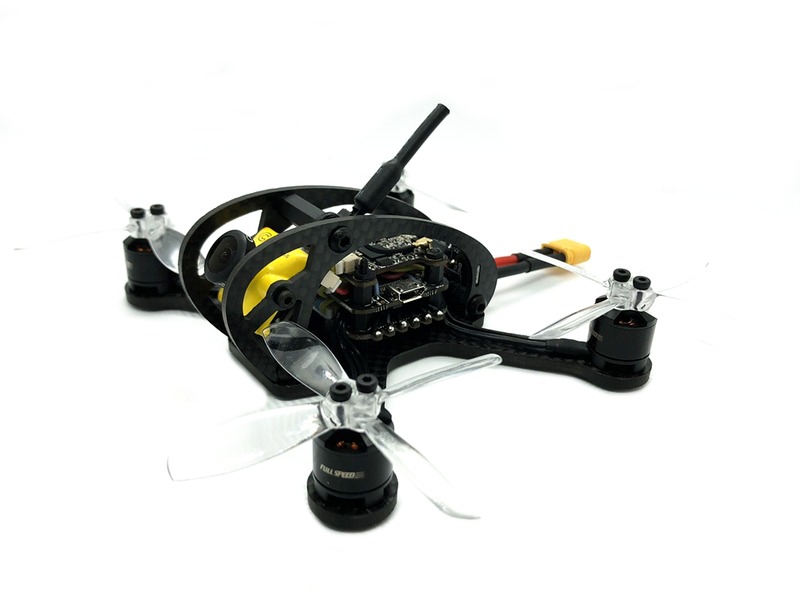Are FPV drones easier to fly?

FPV (First Person View) drones have become increasingly popular in recent years due to their ability to provide a unique and exciting experience for drone pilots. By allowing pilots to see their drone’s actions through a live video feed, FPV drones provide a heightened level of immersion and control compared to traditional remote-controlled drones. This has led to an increased interest in these types of drones, and the question of whether or not they are easier to fly has come up.
The answer to this question is that FPV drones are generally easier to fly than traditional remote-controlled drones. This is because FPV drones offer more precise control and a more immersive experience for the pilot. With FPV, pilots can see exactly where the drone is located in relation to its surroundings in real time, allowing for more precise control over the drone’s movements. Additionally, FPV drones typically have advanced features such as GPS-enabled flight paths and automatic obstacle avoidance, making them easier to fly than remote-controlled drones.
One of the biggest advantages of FPV drones is their increased safety. Since pilots can see exactly where the drone is located, they can make more accurate decisions in regards to the drone’s movements and can react quickly to any potential hazards. Additionally, FPV drones generally have more advanced sensors and safety features such as automatic obstacle avoidance, which helps to reduce the risk of crashes.
Despite the advantages of FPV drones, they are not necessarily the best choice for beginners. While they can be easier to fly than traditional remote-controlled drones, they require a certain level of skill and knowledge in order to be used safely and effectively. Additionally, FPV drones can be more expensive than traditional drones, so beginners may want to consider a more budget-friendly option.
Overall, FPV drones can be easier to fly than traditional remote-controlled drones due to their increased level of control and safety features. However, it is important to keep in mind that FPV drones require a certain level of skill and knowledge in order to be used safely and effectively, and they may not be the best choice for beginners.
Comments / Question
2. Start with a small, light, and inexpensive drone.
3. Get familiar with the airspace and local rules and regulations.
4. Make sure you have all the necessary safety equipment, such as goggles, landing gear, and a ground station.
5. Plan your flight ahead of time and check the weather before you go.
6. Don’t fly in high-traffic areas or over people.
7. Stay aware of your surroundings and understand your line of sight.
8. Avoid flying over animals and never fly directly over another person.
9. Don’t fly if you don’t feel comfortable or confident.
10. Don’t fly at night or in bad weather.
11. Respect other people’s privacy and stay away from restricted areas.
1. Keeping the drone within line of sight at all times.
2. Avoiding flying near people, animals, or other objects.
3. Avoiding flying in restricted airspace.
4. Avoiding flying in bad weather conditions.
5. Making sure the drone is in good working condition before flying.
6. Making sure the drone is registered with the FAA (if applicable).
7. Making sure the drone is equipped with the necessary safety features (e.g. propeller guards).
8. Making sure the drone is operated in accordance with local laws and regulations.
2. Low latency: FPV drones are designed to have low latency, which means that the video feed from the drone is sent to the pilot with minimal delay. This makes it easier to react quickly to obstacles and changes in the environment.
3. On-screen display: FPV drones are equipped with an on-screen display that shows the pilot important information such as the drone’s altitude, speed, and battery level. This makes it easier to monitor the drone’s performance and make adjustments as needed.
4. Head tracking: Some FPV drones are equipped with head tracking technology, which allows the pilot to control the drone by simply moving their head. This makes it easier to maneuver the drone and keep it in the desired position.
2. Increased speed: FPV drones are usually faster than regular drones, allowing for more dynamic and exciting flight experiences.
3. Increased range: FPV drones typically have a longer range than regular drones, allowing for more exploration and coverage of larger areas.
4. Improved visibility: FPV drones are equipped with first-person view (FPV) cameras, allowing the pilot to see exactly what the drone is seeing in real-time.
5. Increased immersion: FPV drones provide a more immersive experience for the pilot, as they are able to feel as if they are actually flying the drone.

